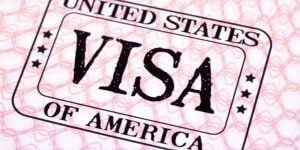
Keeping in touch with loved ones is important no matter where you're living – and a good WiFi connection is also essential if you plan to work from home. Visitors and expats in the US have many options when it comes to going online, from free WiFi connections in public areas to a good data plan on your phone or paying for high-speed service in your home. Keep reading to get an overview of what the internet landscape in the US looks like.
Choosing a home Wi-Fi plan in the US
For most people living in the US, the internet services available will depend on their location and which provider covers their area. Providers offer different types of internet service based on connection speed. DSL, cable, and Fiber Optic Broadband are the most common and range from approximately $35 to $55 per month for a DSL service, and the average monthly cost for Fiber Optic Broadband is around $75 per month, although these prices can vary somewhat.
Although there are many providers in America, some of the big names include Comcast Xfinity, AT&T Internet, Verizon Fios, Spectrum, and CenturyLink. These providers have gained prominence due to their extensive coverage, diverse plans, and service quality. Do your research when you are choosing your plan, as there are often deals that can save you money and other bonuses included to make plans more appealing.
Google Fiber, an ultra-high-speed internet service provided by Google, has expanded its coverage to several cities across the United States. These cities spread across different states, benefit from Google Fiber's lightning-fast internet speeds. In Alabama, Huntsville has Google Fiber coverage, while in California, it's Irvine. The southeastern United States sees a significant presence, with Georgia's Atlanta and North Carolina's Cary, Chapel Hill, Charlotte, Concord, Durham, and Raleigh all enjoying Google Fiber services. The Midwest is well-represented by Kansas cities, including Kansas City, Olathe, and Overland Park in Kansas, along with Kansas City in Missouri. In the southern region, Nashville in Tennessee, and various Texan cities like Austin, Pflugerville, and San Antonio are on the Google Fiber map. Additionally, Google Fiber has made its mark in the western states of Utah, covering cities like Provo, Salt Lake City, and Sandy.
Consider your internet activities before selecting a type of service. Those wanting to stream videos will need a faster connection compared to those who just want to do basic web browsing. Additionally, many providers offer packages that bundle telephone, the internet, and cable television. Package prices vary depending on the operator and the quality of services. Other things to consider when selecting a provider include download and upload speed, cost and contract, type of connection, reliability, security, equipment, and customer support.
So you've chosen the plan; what happens next?
Getting home Wi-Fi in the USA involves several basic steps to ensure a seamless internet connection. Here's a condensed overview:
You've chosen your Internet Service Provider (ISP) based on factors like coverage, speed, and pricing. As referenced above, popular options include Comcast Xfinity, AT&T Internet, Verizon Fios, Spectrum, and CenturyLink. Once that's done, contact your chosen ISP and select the plan that suits your needs. They'll guide you through available packages and pricing.
Next, you will set up an installation appointment with the ISP. They'll confirm the date and time for a technician to visit your home. Typically, the technician will bring a modem and/or router, which are essential for connecting to the internet wirelessly. Some ISPs might provide instructions to pick up the equipment from a local office or send them in the mail.
The technician will install the modem and/or router, connecting them to the appropriate outlets. They'll ensure the setup is properly configured for your chosen plan. If you have collected equipment or received it in the post, you can follow the instructions to set it up.
Once the equipment is connected, the technician will activate your service. This might involve configuring settings and testing the connection to ensure it's working correctly.
Finally, connect your devices. Use the Wi-Fi network name (SSID) and password to connect your devices, such as laptops, smartphones, and smart TVs, to the Internet.
Where to find free Wi-Fi in the US?
All major and midsize US cities offer Wi-Fi access points. You should find free Wi-Fi access in most coffee houses and eateries, tourist attractions, malls, and even parks. Some networks are free to access, and others may be protected with a password.
Remember that public networks aren't always secure, and it's best to avoid using them when handling private and sensitive information. To be safe, you could try using a VPN when connecting to a public Wi-Fi service. Working in cafes is common in the USA, and you are likely to see a variety of students, freelancers, and others using their laptops in such locations.
Depending on where you are in the US, you may also find free Wi-Fi on public transportation: in most major cities, buses and trains are all equipped with free Wi-Fi.
Popular messenger apps in the US
Once you have an internet connection, you can use one of the many messenger and social media apps to stay in touch with friends and family back home.
Some of the most downloaded communication apps in the US are WhatsApp, Facebook Messenger, and Telegram. With these apps, you can not only send over messenger and pictures but also make calls, which can help you save lots of money on international phone calls. If you do need to call a landline abroad, you could use other services like Skype or Google Voice.
Useful links:
Top US internet providers:
We do our best to provide accurate and up to date information. However, if you have noticed any inaccuracies in this article, please let us know in the comments section below.








